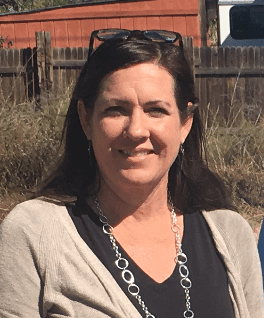Practicing Gratitude
by Tracy Cooper, Dar a Luz Receptionist
As we kick off this holiday season, I wanted to share something I think about a lot…
I’m sure we’ve all noticed that negative experiences tend to have a greater impact on us than positive ones. This is a real phenomenon, and it is known as positive-negative asymmetry or (the easier-to-remember) negativity bias.
As with most things our minds do for us, this tendency does have its benefits. It’s truly all about your body working to keep you safe. This tendency toward learning from the negative can be physical; for example, when you burn your hand on a hot pan, you need to remember the pain to avoid burning yourself in the future. You learn that lesson well.
And emotionally, of course, we tend to notice and ruminate on the painful things way more often, and for the same reason. And that’s the problem… Even if you’re a generally happy person, this negativity bias can make it very easy to forget about the good things in life. In other words, for a multitude of reasons (including biology and chemistry), we’re more likely to remember an insult or negative comment than we are to take in a compliment or recall details of a happy event. The negativity bias can cause you to compulsively dwell on something negative, even if something equally as positive has happened.
Your drive to work today may have been really frustrating and long. When you think about it, you easily remember the anger and impatience and that person who cut you off. But in contrast, those beautiful flowers you drove by on the way to work–their bright colors and amazing smell that filled your car? Your brain tends to consider that information less useful for keeping you safe, and so it gives priority to remembering and learning from the “bad stuff.”
There’s good news, though! There is a simple way to combat this biological tendency.
The key to overcoming negativity bias is to teach your brain to focus on the positive over the negative. In other words: practice gratitude. Gratitude is the root of happiness. It tends to focus you on what you have, and leaves less room to focus on what you might be lacking.
Gratitude is a powerful positive force, and it also has important functions within our biology and chemistry. Far from a fluffy or frivolous concept, if viewed and studied scientifically, gratitude has been shown to have a true impact on physical health and emotional well-being. Numerous studies have shown that exercises as simple as writing thank you notes can elicit a marked change in brain activity–something that can be viewed on MRI! In fact, the mental practice of gratitude may induce structural changes in the brain that can alter function and change and rewire the brain itself. Chemically, when we take the time to express what we’re grateful for, our brains release dopamine and serotonin. These two hormones make us feel happier.
So, how to put all of this into practice? I suggest starting with something that’s really big and easy to work with. Something like… Covid.
Let’s face it…we are all totally over the pandemic. The last few years of turmoil and uncertainty have left many feeling burned out, overworked, and confused, wondering how much what we do matters. 2022 is screaming by, and Covid, like it or not, in one shape or another, is still here. The after-effects are real and deep. We’ve experienced losses and pain and worry, probably like never before. How much longer can this last? How do we even fathom, much less work through, what we’ve lost? When will life be back to what it was before?
While it might seem cathartic to reflect on the hardships, expressing gratitude for what is still here can make a world of difference.
It’s hard to imagine gratitude for something like this. Some questions you might ask yourself include:
- What have I learned?
- What relationships have I forged more deeply than I might have otherwise?
- What strengths did I discover within myself?
- What emerged as something that is truly important to me, which I can now prioritize?
- What positive changes came from this situation — in my job, my family, my hobbies, my circumstances?
- What changes have I experienced in my viewpoint?
- What do I know now that I didn’t know before?
There is always room to reflect on what we’ve lost, and the pain we’ve endured. Sometimes we have to consciously make space for sitting with what we’ve gained, too. It’s not about not knowing important things, or thinking everything is kittens and rainbows now. It is about shining the light on other things, too, and allowing for more balanced view you create. Sometimes, it’s about taking time to notice the flowers.
Philosophers have suggested that gratitude may be the greatest virtue, in part because gratitude leads to so many other virtues. Especially now, when so much feels so negative, it may be worth working on your gratitude skills, and seeing how it feels for a while, and finding out where it leads you.
So, the next time something upsets you or you find yourself caught in a negative spiral, try taking a pause. Grab a piece of paper and ask yourself: What are three things I’m grateful for right now? Breathe in, breathe out, and notice the shift. You have time and space for the beauty and goodness, too.
Finally, another bonus is what your gratitude can do for others. Given that when people are stressed out, they’re more likely to treat those around them poorly, this is an especially important time to not only feel grateful but to express it. Gratitude is “gateway emotion” of sorts, and it’s also contagious. Sharing gratitude lifts both the giver and receiver. And it’s an easy, no-cost gift to give to both yourself and another person.
Gratitude has lasting positive effects. And what a nice thing it is to practice this busy time of year! Staying present, being attentive to others, and appreciating all we have — just as we wait for all we want — there’s no better time to introduce these practices than the holiday season.
And all of us at Dar a Luz are, as ever, so grateful for all of you.

Tracy greets everyone with a warm and friendly smile. She is dedicated to excellent customer service, and her peaceful, calm demeanor puts people around her at ease.
Tracy is a long-time advocate of natural birth. She grew up surrounded by natural births, midwives and healthcare. Her mother was a birth assistant at the Southwest Maternity Center, which was the first and only freestanding birth center in Albuquerque before Dar a Luz. Tracy’s first child was born at home, as well.



